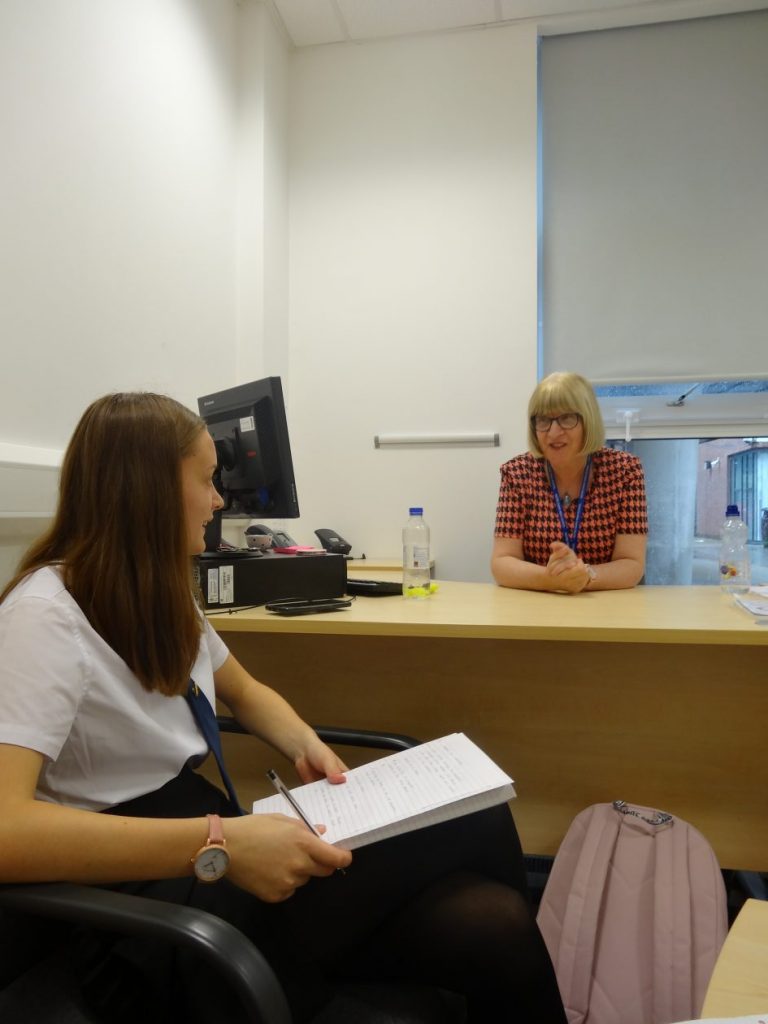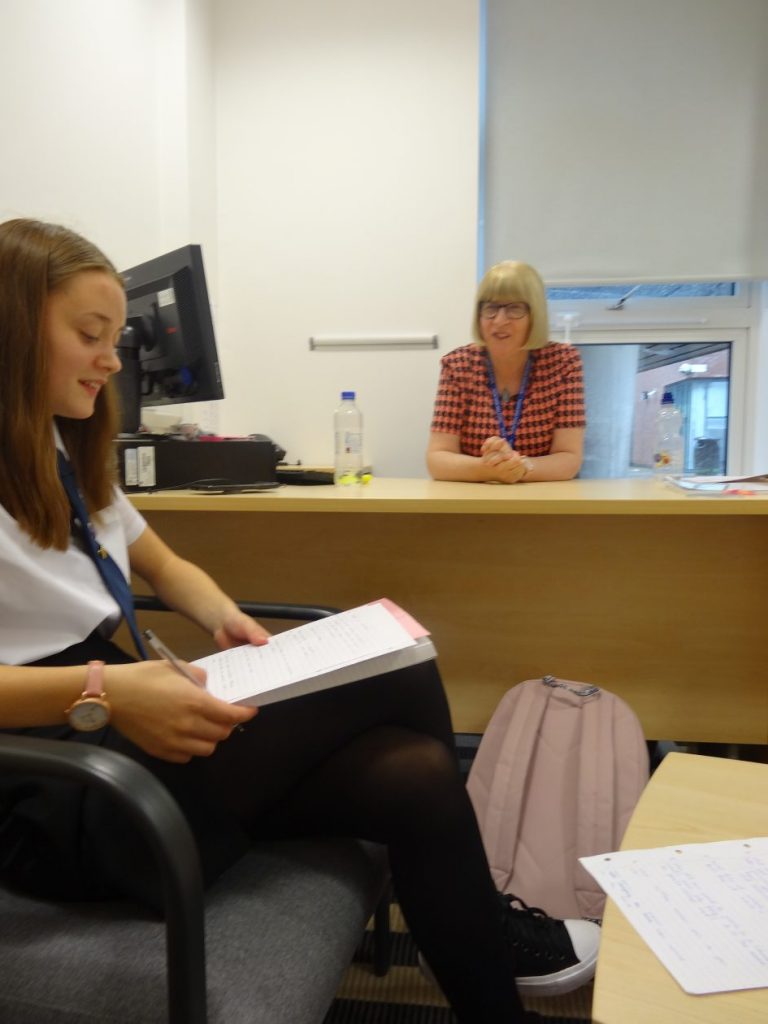Exclusive News Feature: S3 News Writer, Lily Green, digs deep into the mystifying world of Brexit: analysing the news so far, the elections, the rejected drafts, the resignations; she takes her own polls; interviews the leaders in her own institution to gain an in-depth perspective; and then shares her own thoughts and insights on this momentous, evolving political event.
By Lily Green : Brexit Correspondent
Brexit is still a mess. Recent European elections have given a new perspective towards the public’s stance on Brexit and given the major parties (the Conservatives and Labour) a massive reality check, with major losses incurred across political divides.
Notre Dame’s Head teacher Mrs Couttie is disappointed about our turbulent political situation and supports Theresa May’s decision to step down as Prime Minister. Speaking to Notre Dame Now, Mrs Couttie voiced her concern that negative messages surrounding Brexit are likely to cause young people even more anxiety in an ever-changing world.
With Britain’s official exit from the European Union potentially delayed until October 31, there’s still a mountain to be climbed. Theresa May is still trying to persuade Parliament to support the deal, despite all of her early draft attempts being repeatedly rejected. Both major parties are bitterly divided, and nobody is certain about what we should do next or what the future holds for Britain.
Will we have a soft Brexit, a hard Brexit or no Brexit at all? Will there be another Referendum or a General Election? No one seems to know. Theresa May is also under a lot of pressure from the country to please everybody and stick to her stated timescale, however the departing leader has already taken steps to extend the Brexit process.
Most Britons find themselves supporting one of the four Brexit ‘groups’: remainers, soft Brexiteers, hard Brexiteers and those in favour of opting for ‘no deal’ with the EU. The problem seems to be that nobody can compromise and come to a decision. Not only that, the Democratic Unionist Party (DUP) MPs – who have been in a coalition deal with the Conservatives to keep Theresa May’s party in power since the 2017 General Election – are now refusing to support the PM if Northern Ireland is treated differently post-Brexit in any way compared to the rest of Britain.
To see if I could find some Brexit answers for myself, I decided to organise a poll of local people’s opinions on the issue and the results were interesting. I had an amazing response and over one hundred people submitted their views. Overall, 77% voted to remain in the EU, while 19% voted to leave the EU and 4% remain unsure.
A recent petition on the government’s .GOV website has skyrocketed, receiving nearly 6 million signatures – more than the population of Scotland! The petition called for the UK Government to Revoke Article 50 and remain in the EU – basically cancelling Brexit. This has become the most popular petition on the site, overtaking the petition to hold a second EU Referendum, which shows the strength of feeling about this issue.

In Scotland meanwhile, Nicola Sturgeon has published a bill for a Second Independence Referendum since Scotland voted overwhelmingly, in unison, to remain part of the EU. However, Theresa May has already firmly stated that she will not give permission for this vote to take place, with many of her potential successors echoing her firm stance.
Notre Dame’s leader, Mrs Couttie, supports another referendum on Europe, pointing out that much of the regeneration she’s seen Inverclyde benefit from has come from EU funding sources. Mrs Couttie also expressed concerns about the way the public were informed about the issues surrounding Brexit and explored its implications for her in terms of Scotland’s future in the UK.
“I think that a lot of the regeneration in Inverclyde all happened because of the funding from Europe. We need to make sure that our politicians make the right decisions. Another referendum would be a good step, I think that when they first made the suggestion I think a lot of people in England made the decision to leave based on things like immigration. I don’t think that there was enough information given about it at the time, that the advantages and disadvantages were not clear,” said Mrs Couttie.
The Head Teacher even says the whole process has caused her to re-think the debate on Scottish independence, saying “I didn’t vote for independence the last time myself. However I’d have to say that, if we were faced with Brexit and independence gave us a way back into Europe, then I would change my mind and support it.”
On May 23rd, the European elections took place with shocking results that meant the leading parties – Labour and the Tories – suffered major losses because of their confusing stance on Brexit. Before the results were even announced, the PM jumped ship and declared that she was standing down on June 7th.
Scotland’s election results bore stark contrast to the picture in the UK as a whole. The SNP enjoyed another major victory, securing first place in 30 of Scotland’s 32 councils, winning 37.7% of the vote share and half of Scottish seats in the EU Parliament.
Meanwhile, in the UK as a whole the losses suffered by the two main parties benefited an array of smaller parties, including the newly formed Brexit Party who won 31.6% of the vote and 29 of 73 of seats. The Liberal Democrats and the Green Party also enjoyed major gains with the Lib Dems receiving a 20.3% vote share and winning 16 seats (compared to 1 in 2014). The Green Party, meanwhile, received 12.09% of the vote share and won 7 seats (compared to 4 in 2014).
Needless to say, it is a confusing story. With that in mind I spoke to my Modern Studies teacher, Mrs Mileham, to see if she could clarify the confusing tale of Brexit for me.
“It’s a mess,” she said. “Nobody seems to know what’s going on. Nobody really knows what they want. The EU are laughing at us. I’m quite worried about it. Socially, we can already see the effects of it. There’s a massive divide between those that wanted to leave and those that wanted to remain. There’s also been an increase in racial hate crime since the vote went through and that’s a concern.”
Asked about what we should do next, Mrs Mileham urged leaders to take more time over the historic issue, saying, “I don’t know if there are any guarantees that, if we have another referendum, that the results would change. We’re at that stage now where the government aren’t able to make a decision on it; I’m not sure whether the people can either, but trying is better than not doing anything. We should extend the process, definitely.”
After looking at the politician’s opinions, asking the public myself and speaking to both a Modern Studies Teacher and the Head Teacher, I am one of many left feeling thoroughly frustrated at the lack of clear answers on this issue. It’s a scary thought, but if things go to plan (fingers crossed, everyone?), by next Halloween, we’ll be out of Europe, the good guy will defeat the bad guy, the witch will fly off on her broomstick to some far off land, and – abracadabra - we’ll all live happily ever after. The End?















You must be logged in to post a comment.